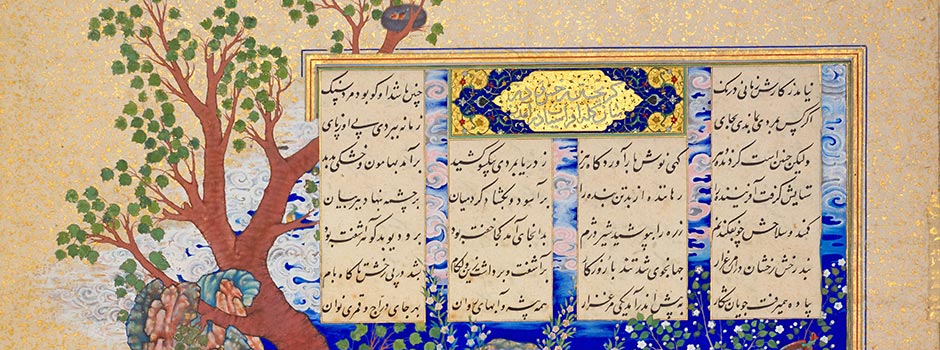
A ROYAL MASTERPIECE TO STAR AT SOTHEBY’S Rare 16th-century folio from ‘The Book of Kings’ to be offered with an estimate of £4 – 6 Million
Oct 19, 2022 EVENT, Art Auction

“The Shahnameh of Shah Tahmasp is a perfect encapsulation of artistic skill, patronage and beauty – universally acknowledged as one of the supreme illustrated manuscripts of any period or culture and ranking among the greatest works of art in the world. The record for any Islamic work on paper is held by a folio from the same manuscript, sold at Sotheby’s in 2011, and so the rare appearance of another at auction represents a great opportunity for collectors in this field and beyond.” Benedict Carter, Head of Department, Sotheby’s Islamic & Indian Art
The Shahnameh – or ‘The Book of Kings’ – made for Shah Tahmasp of Persia (r.1524-76) is one of the finest illustrated manuscripts in existence. The monumental tome covers the greatest epic of Persian literature, containing 50,000 rhyming couplets and tells the history of all Persia’s rulers from the country’s ancient mythical beginnings. The most lavishly illustrated copy of the 10th-century poem in existence, it was illustrated over the course of two decades from 1520 to 1540 by the greatest artists in the royal atelier. It is thought that no other Persian work of art, save architecture, has involved such enormous expense or taken so much artists' time. The result was an unparalleled achievement and stands as one of the greatest works of art in the world.
A magnificent folio from the Shah Tahmasp Shahnameh will make a rare appearance at auction, as part of Sotheby’s bi-annual Arts of the Islamic World & India auction, offered with an estimate of £4,000,000 – 6,000,000. The scene depicts the great hero Rustam recovering his horse Rakhsh – named the Persian word for lightning – two of the main figures throughout the tale.
The manuscript boasts a glittering provenance since it was commissioned to the present day. Commissioned by one emperor, Shah Ismail (the first of the Safavids), it was completed by another, his son and successor Shah Tahmasp, gifted to a third, Sultan Selim II of the Ottoman Empire, and was later owned by Barons de Rothschild. Today, folios from the Shahnameh are treasured in museum collections internationally, including New York’s Metropolitan Museum of Art; The Smithsonian Institution in Washington D.C; The Aga Khan Museum, Toronto; The David Collection, Copenhagen; The Nasser D. Khalili Collection of Islamic Art, London; The Museum of Islamic Art, Doha, and The Museum of Contemporary Art, Tehran.
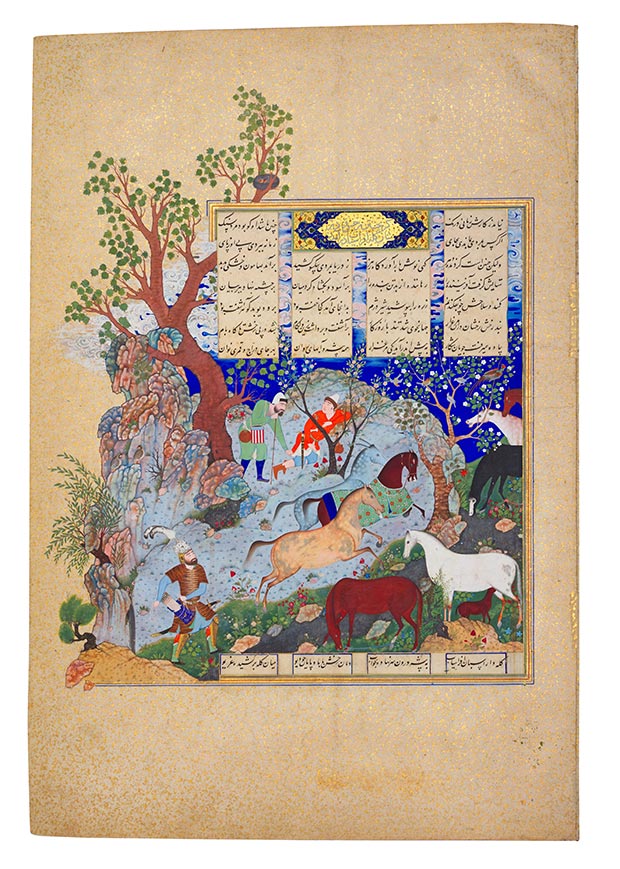 Rustam recovers Rakhsh from Afrasiyab's herd, illustrated folio from The Shahnameh of Shah Tahmasp, attributed to Mirza 'Ali, Persia, Tabriz, Royal Atelier, circa 1525-35 / Courtesy of Sotheby's
Rustam recovers Rakhsh from Afrasiyab's herd, illustrated folio from The Shahnameh of Shah Tahmasp, attributed to Mirza 'Ali, Persia, Tabriz, Royal Atelier, circa 1525-35 / Courtesy of Sotheby's
Rock crystal, from which this flask was carved, is the purest form of quartz, and is renowned for both its hardness and clarity and is associated with air and water in philosophy and poetry. Produced during the heyday of Fatimid power, it is thought that these pieces were used by ladies of the harem for cosmetic purposes.
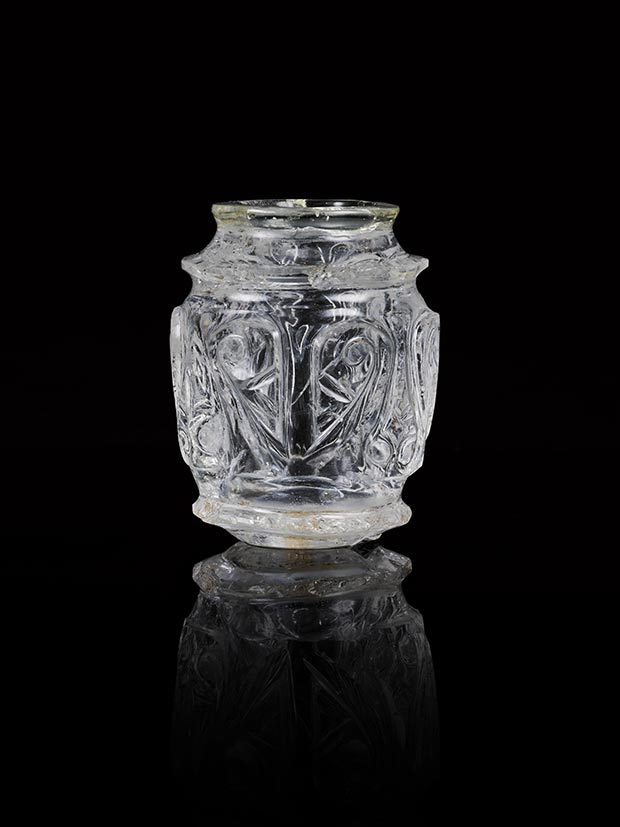 A Fatimid carved rock crystal bottle, Egypt, late 10th-early 11th century / Courtesy of Sotheby's
A Fatimid carved rock crystal bottle, Egypt, late 10th-early 11th century / Courtesy of Sotheby's
A Pair of Crescent-shaped Pearl and Diamond Earrings, India, Hyderabad, late 18th century (est. £50,000-70,000)
These magnificent diamond earrings belong to a group of jewellery that was from the collection of the Nizam of Hyderabad, a dynasty of wealthy rulers known for their spectacular collection of jewels. The family had inherited gemstones from the earlier rulers of Deccan, who oversaw the famous Golconda mines – the world’s only supplier of diamonds for centuries. They were last exhibited at The Metropolitan Museum of Art, New York’s exhibition on the Sultans of Deccan India in 2015.
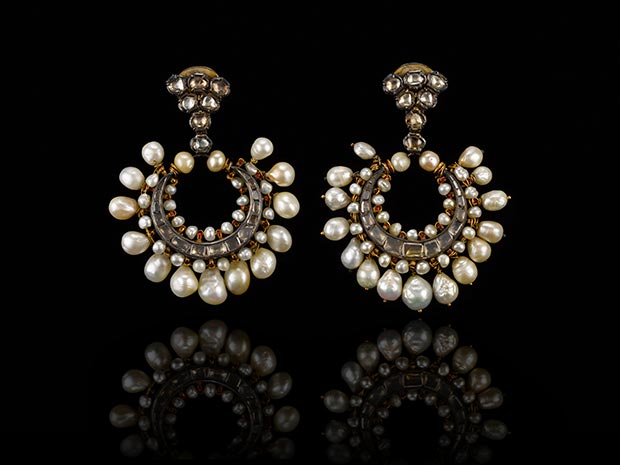 A Pair of Crescent-shaped Pearl and Diamond Earrings, India, Hyderabad, late 18th century / Courtesy of Sotheby's
A Pair of Crescent-shaped Pearl and Diamond Earrings, India, Hyderabad, late 18th century / Courtesy of Sotheby's
A Mughal gem-set glass-hilted dagger and scabbard, India, 18th century (est. £80,000-120,000)
The exquisite dagger, with its distinctive floral gem-set decoration, is most likely to have been produced in the Deccan or for a Deccani patron. The dark, emerald-coloured green glass inlaid with rubies and diamonds relates closely to the enamelled objects produced in Hyderabad during the latter half of the eighteenth century.
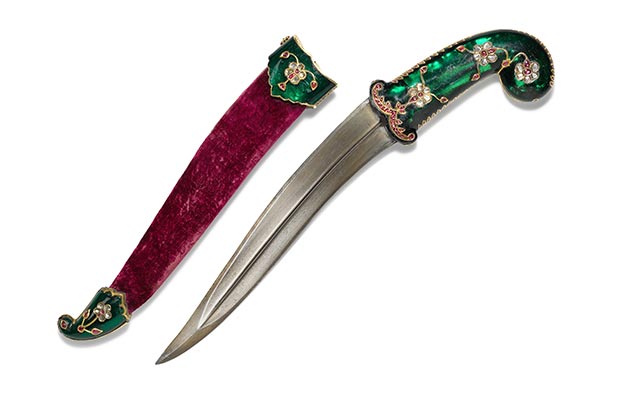 A Mughal gem-set glass-hilted dagger and scabbard, India, 18th century / Courtesy of Sotheby's
A Mughal gem-set glass-hilted dagger and scabbard, India, 18th century / Courtesy of Sotheby's
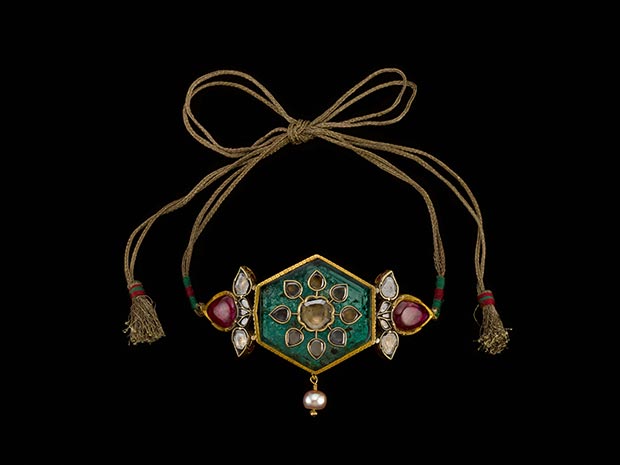 An emerald and diamond-set gold bazuband, North India, first half of the 19th century / Courtesy of Sotheby's
An emerald and diamond-set gold bazuband, North India, first half of the 19th century / Courtesy of Sotheby's
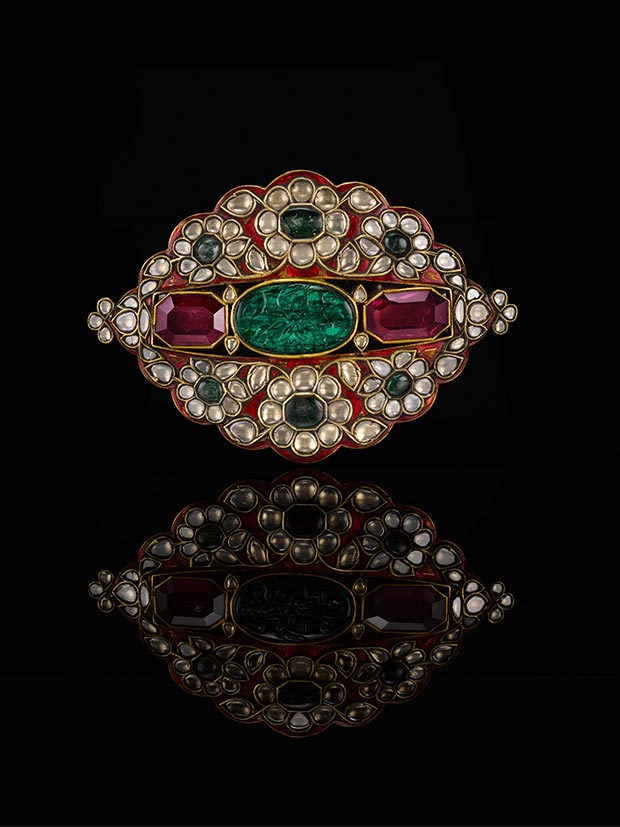 A gem-set and enamelled belt buckle, formerly in the collection of Maharani Jindan Kaur, North India, 19th century / Courtesy of Sotheby's
A gem-set and enamelled belt buckle, formerly in the collection of Maharani Jindan Kaur, North India, 19th century / Courtesy of Sotheby's
The “History of a Thousand Years” was written for the Mughal Emperor Akbar between 1582-88, and recounts the ruling Caliphs through the Islamic period. This work is a rare folio, considered to be the last remaining in private hands, with only approximately eighteen or so others known to survive. Many are in museum collections, including The Museum of Fine Arts Boston, The Freer|Sackler Gallery, Washington D.C., The British Museum, The Los Angeles County Museum of Art, The San Diego Museum of Art and The National Museum New Delhi.
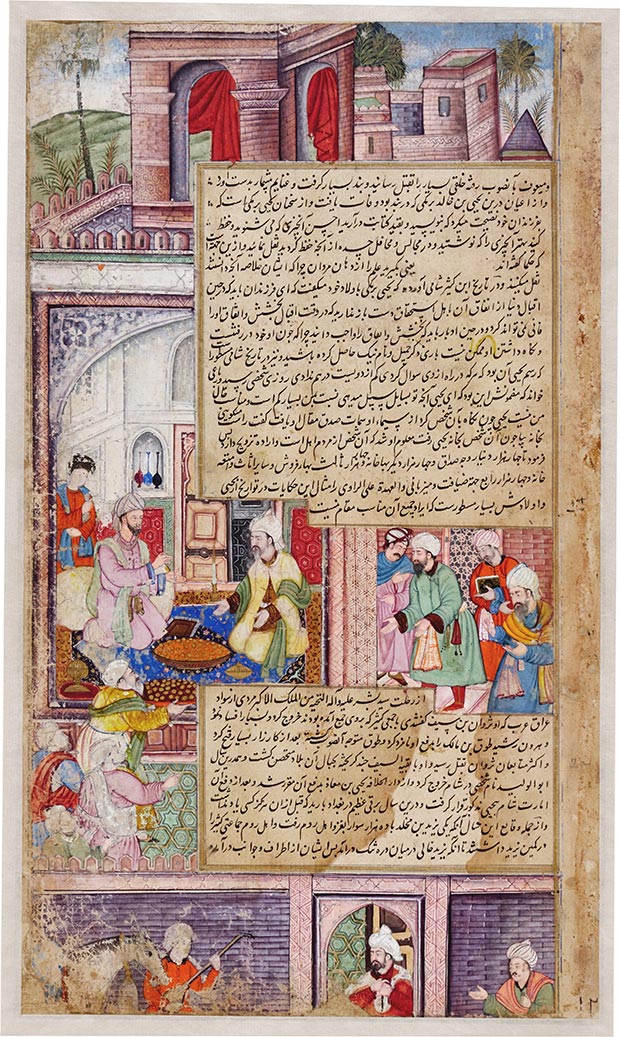 A double-sided illustration to the Tarikh-i-Alfi (The History of A Thousand Years), India, Imperial Mughal. circa 1590 / Courtesy of Sotheby's
A double-sided illustration to the Tarikh-i-Alfi (The History of A Thousand Years), India, Imperial Mughal. circa 1590 / Courtesy of Sotheby's
Incorporating two tones of gold in the opening illumination in contrast with a dazzling ultramarine lapis lazuli, this Qur'an, in superb condition, exemplifies the height of Safavid illumination. The ambitious decorative scheme and the overriding quality point to an illustrious patron.
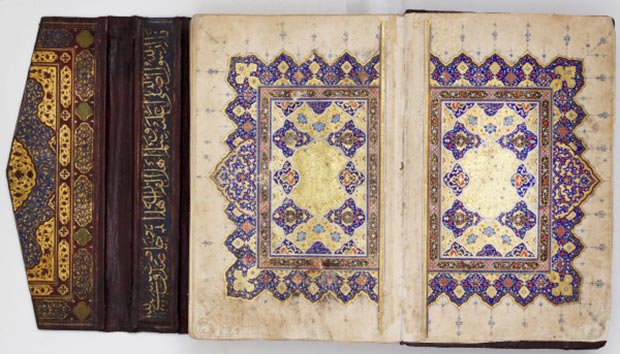 An exceptional illuminated Qur'an, copied by Yusuf ibn 'Abdullah student of 'Ala al-Din Muhammad Tabrizi, Persia, Safavid, dated 983 AH1575-76 AD / Courtesy of Sotheby's
An exceptional illuminated Qur'an, copied by Yusuf ibn 'Abdullah student of 'Ala al-Din Muhammad Tabrizi, Persia, Safavid, dated 983 AH1575-76 AD / Courtesy of Sotheby's
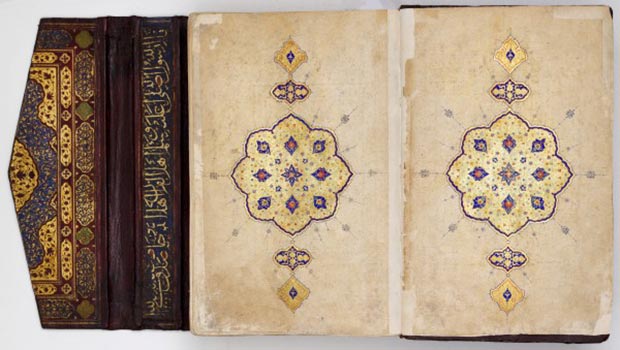 An exceptional illuminated Qur'an, copied by Yusuf ibn 'Abdullah student of 'Ala al-Din Muhammad Tabrizi, Persia, Safavid, dated 983 AH1575-76 AD / Courtesy of Sotheby's
An exceptional illuminated Qur'an, copied by Yusuf ibn 'Abdullah student of 'Ala al-Din Muhammad Tabrizi, Persia, Safavid, dated 983 AH1575-76 AD / Courtesy of Sotheby's
This monumental folio originates from one of the largest Kufic Qur’ans of the early Islamic period, the scale suggesting a patron of great wealth and importance. The simplistic ornamentation that gives focus to the text is typical of the earliest period of Kufic Qur'ans in the 8th century.
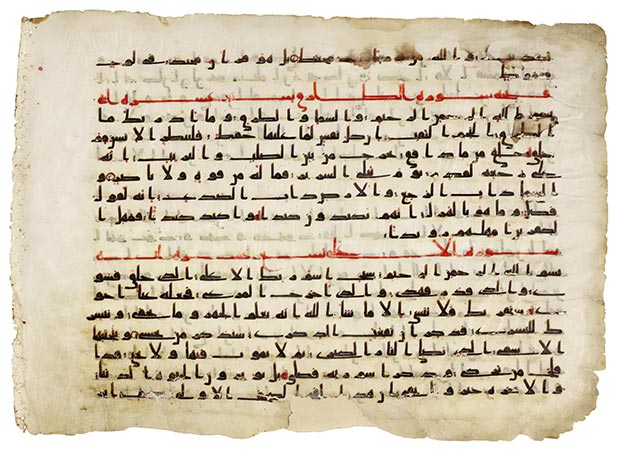 A monumental Qur'an leaf in Kufic script, Near East or North Africa, circa 750 AD / Courtesy of Sotheby's
A monumental Qur'an leaf in Kufic script, Near East or North Africa, circa 750 AD / Courtesy of Sotheby's
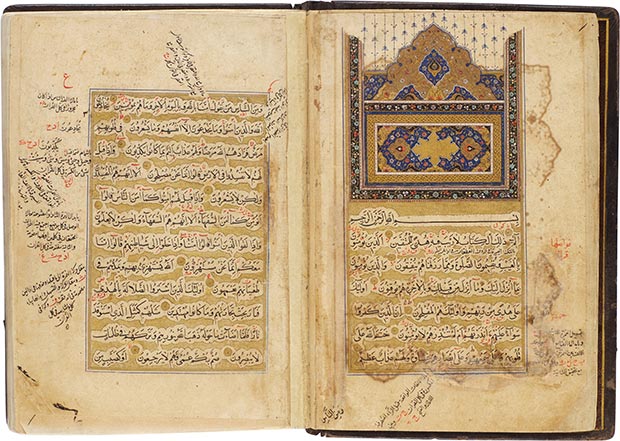 An illuminated Qur'an, India, Mughal, second half 17th century / Courtesy of Sotheby's
An illuminated Qur'an, India, Mughal, second half 17th century / Courtesy of Sotheby's
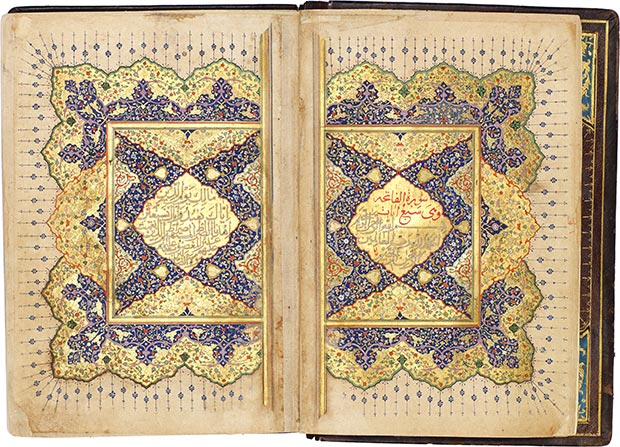 An illuminated Qur'an, India, Mughal, second half 17th century / Courtesy of Sotheby's
An illuminated Qur'an, India, Mughal, second half 17th century / Courtesy of Sotheby's
The sale also offers 15 Indian paintings from the collection of Betsy Salinger. The selection, not seen on the market in decades, crosses centuries, spanning outstanding Mughal folios to the distinctive styles of the lyrical Pahari schools, the dynamic Rajasthani schools to the masterful Mughal and Deccani schools and court ateliers.
Comments
Add a comment
Commenting is not available in this section entry.